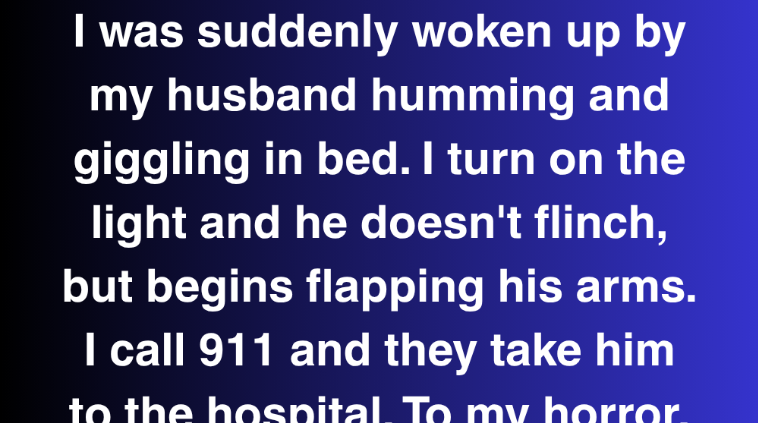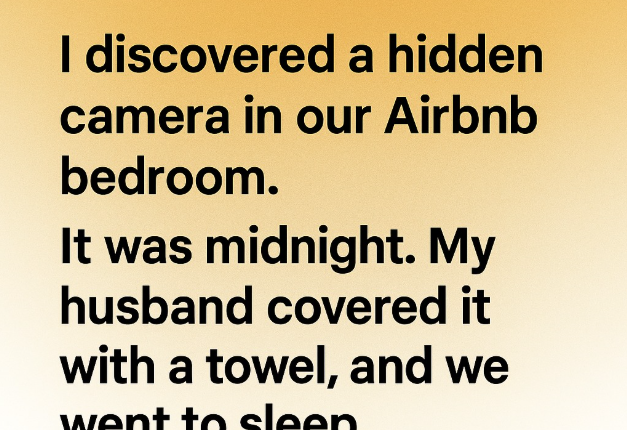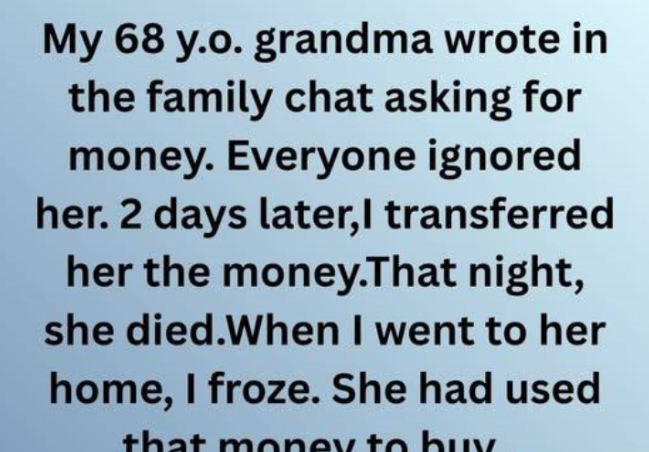One night, I was abruptly roused from sleep by my husband, Sayed, humming and chuckling beside me in bed. I flicked on the lamp, and he didn’t even blink, instead starting to wave his arms wildly. Alarmed, I dialed 911, and soon paramedics whisked him away to the hospital. There, to my shock, doctors revealed he had experienced a mild seizure, likely triggered by overwhelming emotional strain or lack of sleep.
I sat frozen, gazing at his still form in the emergency room, my pulse pounding in my ears. Machines surrounded him, a plastic mask covering his mouth, his chest moving gently with each breath. A nurse approached and asked, “Has your husband shown any unusual behavior recently?”
I wanted to deny it. But a nagging feeling held me back.
The past few months had felt strange. Not alarming, just… different. Sayed had begun staying up late, claiming he needed to wrap up work tasks. I’m not one to pry, but I noticed him quickly closing his laptop whenever I entered the room. Once, I overheard a name—“Nadia”—during one of his calls. When I asked about her, he brushed it off, saying she was merely someone from procurement.
His phone started staying on silent, and he’d carry it with him even to the bathroom.
I attributed it to stress. We’d faced tough financial times; his small logistics company had nearly collapsed during the pandemic, and we were only beginning to recover. I assumed he was shielding me from worry, perhaps embarrassed about our situation.
But now, seeing him so vulnerable and silent, I sensed something deeper was at play.
The doctors decided to keep him overnight for monitoring. I returned home to gather some clothes for him and, on impulse, grabbed his laptop. I told myself it was to help the doctors understand what he’d been working on before the seizure.
At our dining table, my hands trembled slightly as I opened the laptop. It wasn’t even locked with a password.
The first thing I saw was a folder labeled “Invoices_2022.” Inside was a single spreadsheet, but it wasn’t about invoices. It contained names, dates, and dollar amounts. Scrolling down, I saw a total of $48,700 over nine months, each entry marked “N.L.”
Most names were unfamiliar, but one made my stomach churn: “E-transfer – Nadia L. – $4,200 – ‘Tuition Payment.’”
Tuition?
I navigated to his email and searched “Nadia.” Hundreds of messages appeared. Some were casual, sharing articles or videos. Others were lengthy, filled with talk of emotions, regrets, and dreams from “simpler times.”
This didn’t sound like procurement.
One email’s subject line read, “Still thinking about your necklace in Santorini.”
That broke me.
Tears welled as I stared at the screen, feeling foolish. Sayed, the man who once called me “his lighthouse,” had been funneling thousands to another woman, possibly funding her education. This wasn’t a fleeting affair. They shared memories, inside jokes, even photos. I found a screenshot of a plane ticket to Montreal for a “conference” last October. But his inbox held a selfie of them at a café.
She was young, maybe mid-twenties, with vibrant pink curls and gold hoop earrings. She smiled confidently at the camera while he kissed her cheek.
I didn’t sleep that night.
When I returned to the hospital, Sayed was awake, sipping juice and watching TV as if nothing had happened.
I held back, watching him closely. He acted normal, joking with nurses, texting when he thought I wasn’t looking.
That evening, back home, I confronted him at the kitchen table.
“Who’s Nadia?” I asked calmly.
He glanced up from his phone. “What?”
“Don’t act clueless. I saw the emails, the transfers, everything.”
His expression went blank, followed by a heavy silence. Then he stood and said, “It’s not what you think.”
That tired line. The one that confirms your worst fears.
He claimed Nadia was the daughter of an old family friend. Her mother had died, her father was gone, and he saw her as a niece, helping her through school.
“And the photos? The kiss? The ‘Santorini necklace’?” I pressed.
He faltered, mumbling about getting “emotionally confused,” feeling pity for her, boundaries blurring.
I asked directly, “Did you sleep with her?”
His three-second pause told me everything.
I didn’t yell or sob. I just grabbed my keys and left.
I drove aimlessly for hours, eventually stopping at my cousin Rukhsana’s house. She opened the door in pajamas, saw my face, and said, “Stay as long as you need.”
The next morning, Sayed texted me:
“Please keep this private. Let’s talk. I’ll end things with her. I messed up.”
That message shifted something in me.
This wasn’t only about betrayal. It was about years of deception, of being sidelined in my own life. I was clipping coupons while he sent thousands to a woman who wore Chanel and posted yoga selfies.
I stayed with Rukhsana for two weeks, digging deeper. On social media, I found Nadia. She’d tagged him in a 2021 photo, but under the name “Shawn.”
My husband had built a second identity.
That revelation unraveled everything.
I contacted a lawyer discreetly, exploring my options without committing to divorce. I learned our house was still in both our names, but Sayed had taken a second loan against it—without my knowledge—to “save the business.”
That night, I returned home, walked in calmly, and demanded, “Show me all your financials. Now.”
He was defensive at first, then angry. But when he saw my resolve, his demeanor shifted. He went quiet, retrieved a box of papers from the study, and handed it over.
The truth poured out: – His business revenue had plummeted 60%. – Credit cards were maxed out. – Nadia wasn’t just a fling; he’d promised to fund her “lifestyle brand.” – Worst of all, he’d used my social insurance number for one of the loans.
That was the end.
I filed for divorce.
But then came an unexpected turn.
Three months into the legal process, a letter arrived from a Vancouver law firm. Nadia had filed a fraud complaint against Sayed, claiming he’d misled her into believing he was divorced, promised her financial support, then vanished.
She had evidence: screenshots, voicemails, even a voice note where he admitted to forging a signature.
That letter became my lifeline.
My lawyer used it to demonstrate Sayed’s pattern of deceit, not just toward me but others. I protected my share of our assets, restored my credit, and—best of all—kept the house.
Sayed moved in with his brother. Nadia went public, posting a tearful video titled “The Married Man Who Lied to Me and Stole My Twenties.” It gained traction online, and people in our community recognized him. His business collapsed entirely.
I’ll admit, I felt a quiet satisfaction.
But more than that, I felt liberated.
I returned to teaching part-time, leading music classes at the community center. I reconnected with old friends and joined a women’s support group that met Thursdays in a Lutheran church basement. We sipped tea, laughed about our pasts, and cried when we needed to.
Then, at a craft fair, I met Teo, a retired mechanic who taught welding to at-risk youth. We chatted about plants—how mint grows like a weed—and the quirks of Facebook Marketplace.
There were no grand gestures, no sweeping romance. Just ease. Steady conversation. He carried my bags to my car and called two days later.
We’re taking it slow. I’m cautious, watching for warning signs.
And maybe that’s the true takeaway.
Lies aren’t always obvious, especially when cloaked in kindness or built on years of trust. But the truth, however painful, sets you free in time.
If someone makes you doubt your instincts, dismisses your gut, know this: your gut matters.
Pay attention to the subtle changes. The silenced phones. The late-night emails. The generosity that feels like guilt in disguise.
Because one day, you might open a laptop… and your world will shift.
Thank you for reading. If this story struck a chord, please share it—someone out there might need the encouragement.






